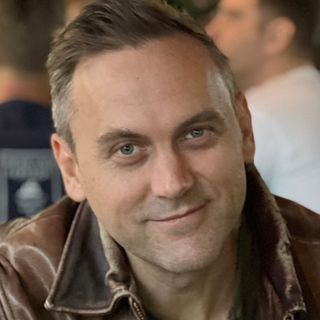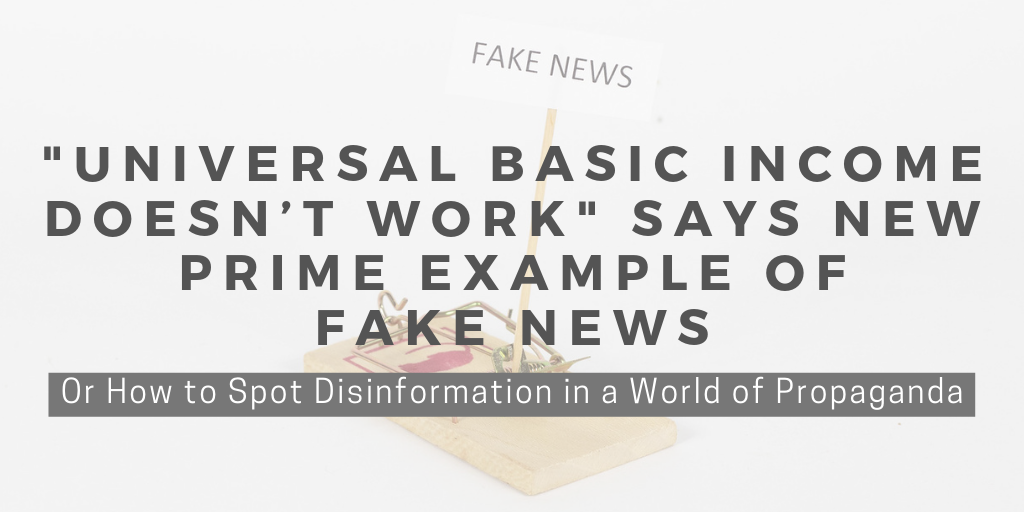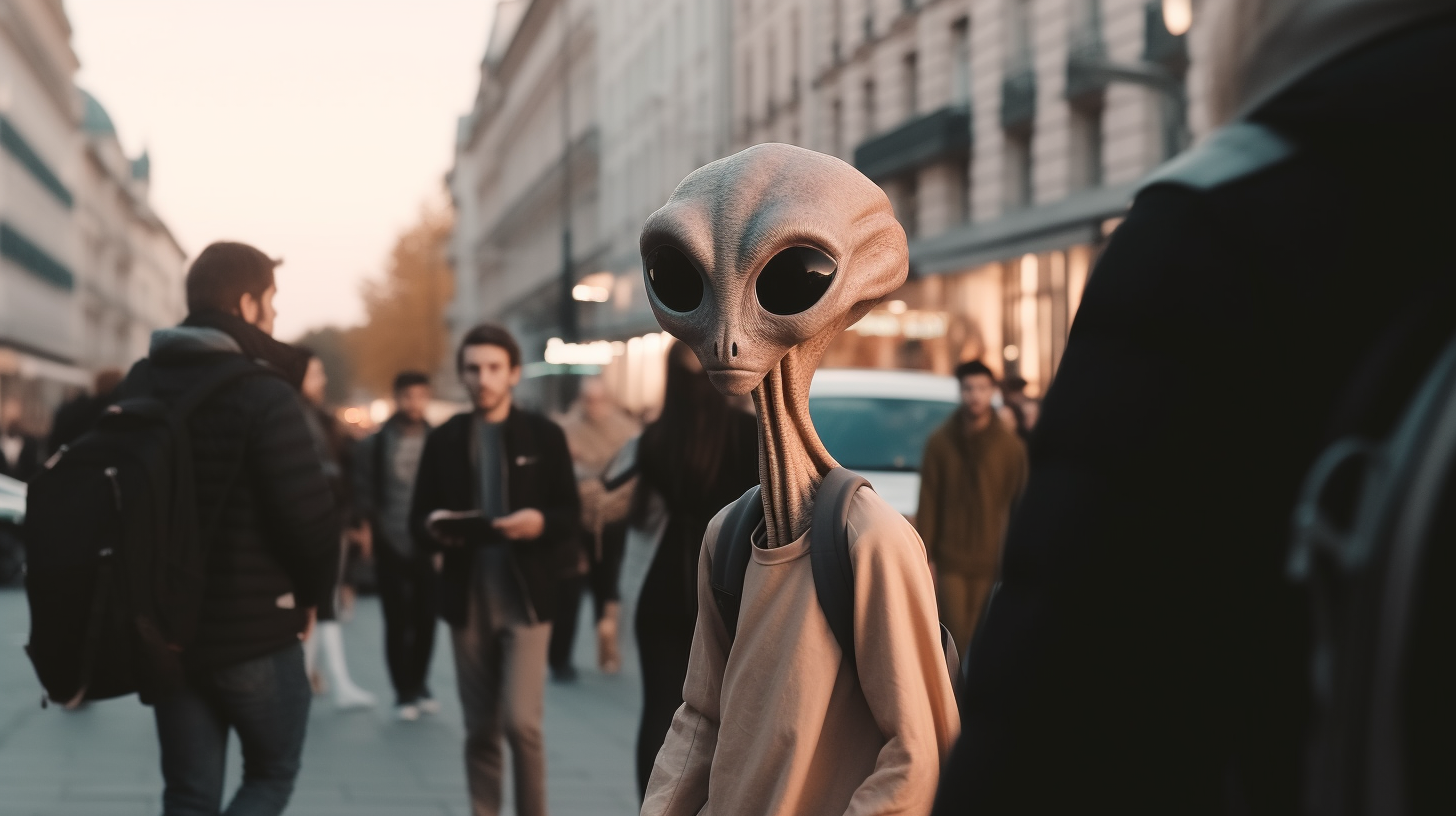The Zombification of Intellectual Property and the Tool That Could Finally Reform It
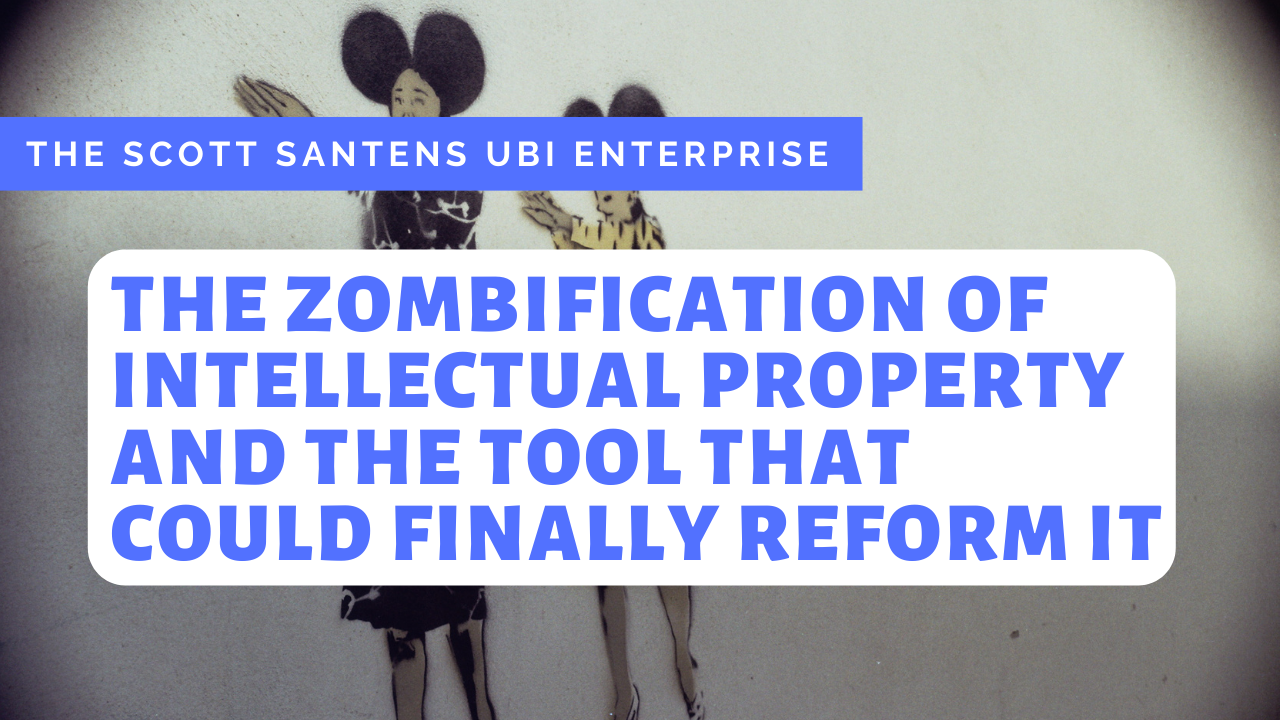
How IP-Funded Basic Income Could Enrich the Public Domain
You know what a zombie is, right? Do you know why you know? You know because of a mistake that threw Night of the Living Dead freely into the public domain, bypassing all standard copyright protections. Purely by accident, George Romero’s groundbreaking film instantly became a horror classic that could be licensed at no cost. The result was a movie that every theater could show, every TV station could broadcast, every artist could adapt and build off of… it was essentially a gift to the entire world.
I think the success of zombies as a worldwide phenomenon provides an excellent case for looking at the entire idea of intellectual property (IP) differently. What is the purpose of IP? What is its history? What should its future be? And how can we best get to that future? To answer these questions, let’s go back to where it all started — censorship and money.
The Dawn of the Undying IP
Originally it was pretty easy for both Church and State to limit thought by controlling the pen, but then technology advanced as it always does, and the printing press greatly replaced the pen. Worried that this new technology would enable all kinds of new ideas to be published, Queen Mary in 1557 granted The Worshipful Company of Stationers a royal charter giving them the exclusive right to publish. Upon the expiration of this charter, England’s Parliament signed into law the Statute of Anne in 1710, which was the first copyright law, where authors themselves were granted by the State a monopoly on their words for 14 or 21 years, and no longer. Control was shifted to authors, but control it remained, and part of the reasoning was to avoid “the ruin of them and their families.” In other words, authors needed money to live and copyrights could help provide that.
Meanwhile, patents were seen as a way of raising government revenue without taxation, which would then also allow for the granting of favors to secure loyalties. By paying a fee, those who paid and were approved could become protected from competition. It was also meant to encourage inventors to disclose the details of their inventions, in other words to help society more than to help inventors. As written into the U.S. Constitution in 1787, Congress has the authority to grant patents “to promote the progress of science and useful arts, by securing for limited times to authors and inventors the exclusive right to their respective writings and discoveries.” Besides just raising government revenue, patents were thus originally seen in the United States as a way of encouraging innovation through temporary restriction.
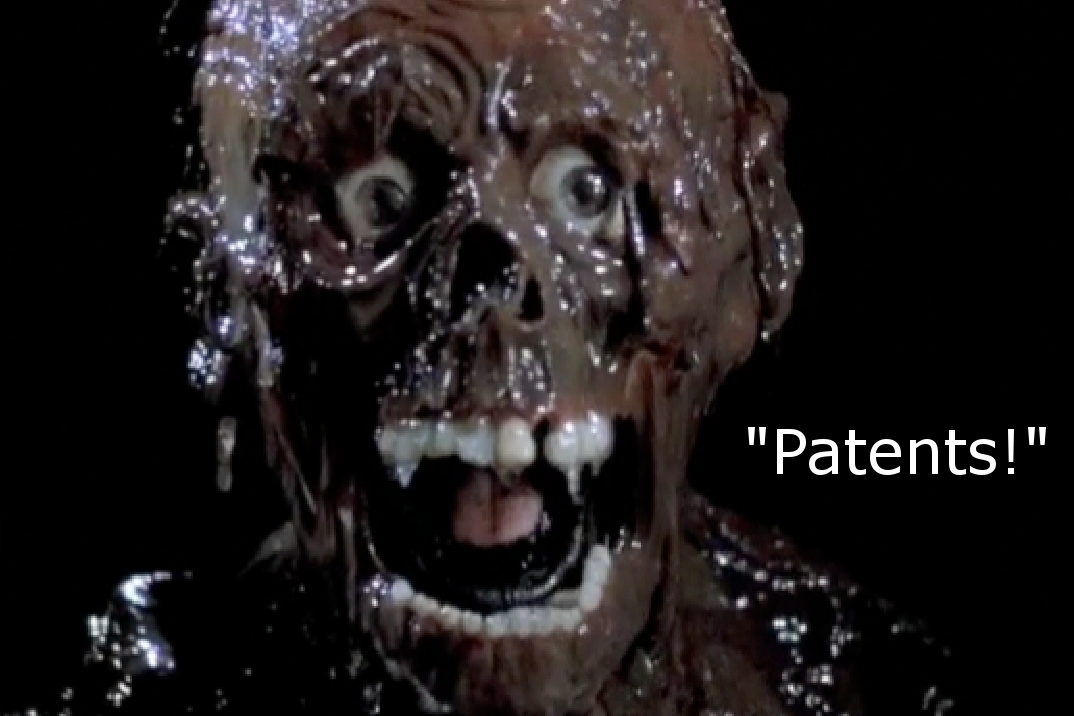
Fast forward hundreds of years to today. Corporations worth billions of dollars now gobble up intellectual property like a pack of zombies at a brain buffet and have successfully and repeatedly fought to expand the duration of IP protections. Why? For innovation? No, the reason is because corporations love IP as a barrier to entry to restrict competition and to extract unproductive economic rent from the economy. They are rent seekers.
Intellectual property costs money. Corporations have money. Corporations use that money to buy IP, not only to protect ideas they’ve invented or purchased, but to function as a shield against lawsuits and to use as leverage for protectionist dealmaking. So for example, two companies can sue each other or threaten to, and as a result decide to cross-license to each other, protecting themselves from competition. Companies without the money for patent arsenals can’t compete in such ways, and are open to patent lawsuits thanks to larger IP-armed companies having little fear of being countersued.
This isn’t the capitalism of competitive free markets. This is rentier capitalism where the size of corporations and the power of governments are utilized to extract profits without innovating. We see this kind of behavior in drug companies all the time. If someone invents something new and innovative, and they sell the idea to a big pharmaceutical company, that company may lock away the patent and use it to prevent anyone else from using the new idea. It can then continue business as-is without productive investments to improve itself. The result is a lack of innovation — the exact opposite intent of patents.
The idea of intellectual property has been twisted and malformed. What was always clearly mandated as being temporary as a means of giving innovators a head start, has become measured in terms of lifetimes instead of decades. Current copyright law extends copyright for 70 years after the author’s death, and corporate works-for-hire are copyrighted for 95 years after original publication. Copyright law started in the U.S. at 14 years with the right to renew for another 14 years. Current patent law provides protection for 20 years from filing. It started at 14 years from issuance. On its face, this isn’t an extreme change for patents, but what has become extreme is the way they’re collected en masse by corporations with the deepest of pockets who are consolidating into a handful of oligopolistic megacorporations.
The story of how we went from temporary protection to a century or more of monopolistic control can really be simplified down to just one word — Disney.
The Mouse That Won’t Die
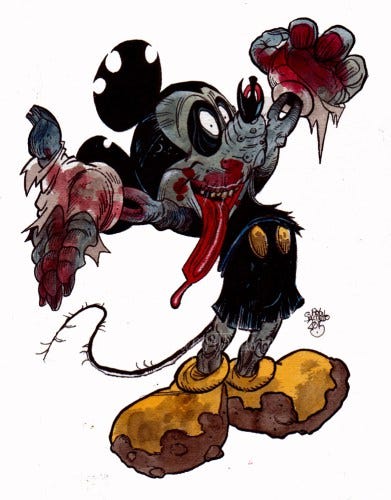
Walt Disney is a name we know because of the stories he told. Where did he get those stories? He got them from the public domain as told by the Brothers Grimm. Where did they get their stories? They got them from the public domain too as folk tales passed down from generation to generation. The Disney name was built on the public domain as its very foundation. Walt Disney then excluded his stories from the public domain via intellectual property law. But IP law as it existed in Disney’s time wasn’t good enough for Disney’s company after his death, because it would mean everyone eventually being able to create stories about Mickey Mouse and his friends, so The Disney Company started dumping money into perhaps the most lucrative corporate investment of all — lobbying.
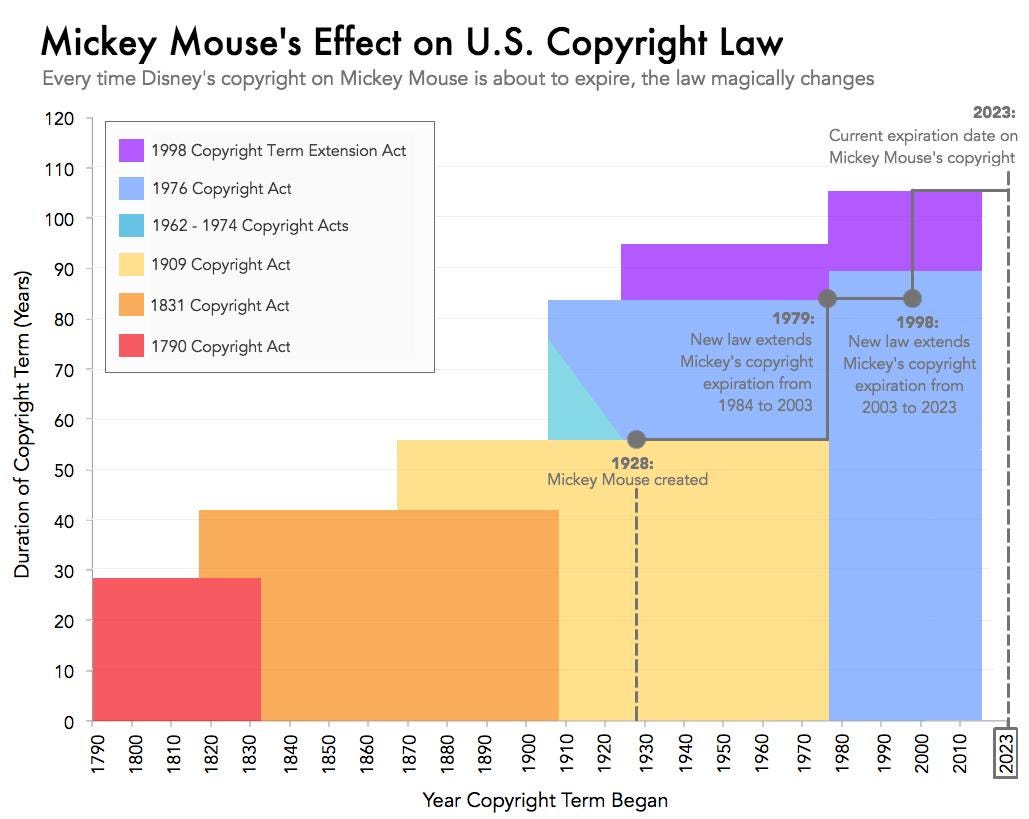
Had Disney (and others) not lobbied for extending the duration of copyrights, Mickey Mouse would have entered the public domain in 1984, but thanks to the power of corporate lobbying, in 1979 with five years left to go, that date became 2003. Thanks to even more corporate lobbying, in 1998 with five years left to go again, 2023 became the new date. With five years left to go as I write this, we may see another extension any time. These extensions have also had retroactive consequences on countless other non-Disney-owned works.
When Congress changed the law in 1976, it gave all existing copyright protected works published between 1923 and 1977 a term of 95 years. Because of this, works from 1923 will only begin to finally enter the public domain in 2019. Meanwhile, works from 1961, whose arrival into the public domain would have originally been expected in 2018, now won’t enter the public domain until 2057. And duration wasn’t the only change. Another change made to copyright law is it became automatic upon creation. That it was once not automatic is how zombies as we know them came to be.
Before reading further, I recommend watching the above video essay created by kaptainkristian. It’s a fantastic video. In it, he explains how prior to 1976, copyrighting a film required the copyright mark be affixed to the title card at the beginning of the film at the time of its first public viewing. Due to a last minute renaming of the film from Night of the Flesh Eaters to Night of the Living Dead as to avoid confusion with an existing film named The Flesh Eaters, the title card that had the copyright mark was swapped with one that didn’t. The result was a brilliant film being released directly into the public domain.
Any movie theater could screen it. Any TV station could air it. As a result, it appeared everywhere, including within other movies and shows. Artists were free to adapt it, to use George Romero’s vision of zombies within their own new works. Zombie movie after zombie movie was born, each using zombies that looked and acted like Romero’s zombies, that followed the same zombie rules of being slow-moving reanimated corpses that required destruction of the brain to kill. This would never have been possible if zombies as depicted in Night of the Living Dead were protected property.
Yes, it was a good film, but its ubiquity is a huge part of how it came to spawn an entire multibillion-dollar industry. The Walking Dead would not exist if Night of the Living Dead’s title card had included a copyright declaration, neither would Game of Thrones exist as we know it. Name your favorite zombie movie, show, book, or comic. None of them would exist as we know them, if at all, had George Romero been given a monopoly on his zombies.
There are other examples of this too. What’s your favorite Christmas movie? Is it It’s a Wonderful Life? If so, that’s largely because it entered the public domain in 1975, after not properly being renewed for an additional 28 years after its first 28 years of protection expired. As described by The Center for the Study of the Public Domain:
“Because its copyright was not properly renewed after the first 28-year term. The film had been a flop on release, but thanks to its public domain status, it became a holiday classic. Why? Because TV networks were free to show it over and over again during the holidays, making the film immensely popular. But then copyright law reentered the picture…. In 1993, the film’s original copyright holder, capitalizing on a recent Supreme Court case, reasserted copyright based on its ownership of the film’s musical score and the short story on which the film was based (the film itself is still in the public domain). Ironically, a film that only became a success because of its public domain status was pulled back into copyright.”
Every year, the CSPD releases a list of movies and books and music that would have entered the public domain that year, had copyright law not been changed and works of art were allowed to enter the public domain as according to the 1909 copyright act. This year, those books included Catch-22, Stranger in a Strange Land, and The Phantom Tollbooth. This year’s movies would have included Breakfast at Tiffany’s, West Side Story, and The Parent Trap. This year’s music would have included Patsy Cline’s Crazy, the song Stand By Me, and Surfin’ by the Beach Boys. Adapting any of this material, or using it within your own would have been absolutely free. But that changed, and now it won’t be freely available for all of us to use until 2057.
Even science is being impacted. There were scientific papers published in 1961 that would have entered the public domain this year as well. Instead they’re locked behind paywalls where one can be required to pay $30 for one day of access. Do you think humanity benefits when 60-year-old science is behind paywalls?
Who does this all benefit? Not us, because it’s been estimated that the total economic loss due to patents alone is about $1 trillion per decade. It’s not benefiting the creators, because many of them are already dead, and yet the argument goes that if copyright didn’t extend 70 years past death, creators would create less. Another way of saying this is creators are only motivated to create if they’re protected from competition for their entire lives, the lives of their children, and the lives of their grandchildren and great grandchildren. That’s an absolute lie. The truth is that companies like Disney want to be protected from competition for as long as they can, because money, and because companies never die.
Every new copyright extension does far more to reward those who own the rights to existing works than it does to encourage the creation of new works. This is antithetical to the entire point of copyright’s ability to encourage new stuff. So if copyright should not be life plus 70 years, what should it be? Is there a kind of Goldilocks zone where government-granted protection is long enough to encourage new stuff to a greater degree than a lack of protection would, but not so much as to have no effect on incentives and even actively harm creation by withholding resources for artists to use, adapt, and remix?
The answer may be 15 years.
In the 2009 paper Forever Minus a Day? Calculating Optimal Copyright Term, its author Rufus Pollock of the University of Cambridge built a first-of-its-kind theoretically-and-empirically-grounded model, and concluded the optimal copyright term would be approximately 15 years with a 99% confidence interval extending up to 38 years at the most.
Existing copyright law protects new works for far, far too long. All such lengthy protections do is better enable corporations to extract rent. Why create something truly new when you can just milk something dry for two centuries due to enforced lack of competition? The sole purpose of copyright as a tool is to benefit the public at large through encouraging a larger pool of ideas. Enriching creators has only ever been the means of accomplishing that purpose, not the purpose itself. A rich public domain enriches us all. A small public domain costs us all. It is creatively impoverishing. Copyrights being as long as they are serve to actively restrict our total knowledge base.
We believe long copyrights help the little guy, but copyright extensions are not for the little guy. They were not the results of grassroots organizing by millions of poor artists. They were about those with money wanting more of it. The little guy just tends to go along with it, because of the promise of the potential of more economic security for themselves and for their families. If you’re earning royalties from a book you wrote, as long as you need money to live, you’re likely going to be for continuing that passive income until your death, and you’ll even support terms that exceed your death out of the same concern for your family and the generations who succeed you. Therein lies the problem, but therein also lies the solution…
As it stands, copyright reform poses a hell of a challenge, and the challenge is global. However, unconditional basic income is a potential game changer. The unconditional provision of an income sufficient for the meeting of basic needs as a monthly starting point, would weaken the popular support for long copyrights. Why support copyrights that last 70 years beyond your death, if you know you’re going to be okay, your family will be okay, your kids will be okay, your grandkids will be okay, and your great grandkids will be okay? If everyone starts each day with enough money to live, then obtaining money to live is no longer the all-encompassing overriding concern that it is now, right?
There’s also an opportunity here to use how we fund UBI to accelerate the expansion of the public domain. Because we want a large public domain upon which we can all use to build new ideas, and the granting of intellectual property rights is something we grant collectively, I propose we charge an annually increasing fee to those wanting IP protection, where the revenue goes immediately to every individual as their share of what’s being withheld from the public domain. Call it an IP fee and dividend (or IP fee and rebate).
The IP Dividend
Intellectual property dividends could work like a carbon fee and dividend, and for the same reasoning. By introducing an annually increasing price for IP protection, it would eventually become too expensive for companies like Disney to continue excluding IP from the public domain. But at the same time, the longer something is kept from the public domain, the public itself would be increasingly enriched, so either way, the public wins.
To illustrate, let’s take Mickey Mouse as an example. Imagine if Walt Disney had been granted 15 years of protection on Mickey Mouse for an initial fee of $10. At the end of 15 years, to renew protection for another year, it could cost say $20. The next year it would be $40, the next year $80. These are numbers that most people can afford, especially Disney. But the increase is exponential.
At such a rate, in 1966, on the 38th year of copyright protection (which remember has been calculated as the uppermost boundary of an ideal length of protection for maximum public benefit) in the year of his death, Walt Disney would have needed to pay $167 million to maintain exclusive rights to Mickey Mouse. Had The Walt Disney Company wished to then continue maintaining exclusive rights after Walt’s death, they could have done so, but it would have been increasingly expensive. In 1970, the fee would have surpassed $2 billion. In 1980, it would have surpassed $2 trillion.
In 1980, with a population of the US being 226 million people, each person’s share of the fee Disney paid that year to prevent everyone from freely using Mickey Mouse would have been around $12,000. That’s a basic income, and it would have been paid for entirely by Disney, and not by any taxes whatsoever.
Realistically of course, Disney could never pay $2 trillion, but that’s exactly the point. Every year beyond 38 years of protection should be prohibitively expensive to the point everyone looking to maintain exclusive rights would need to eventually conclude it’s no longer worth it to maintain exclusive rights, at which point the IP would become available to all. But for every year they do consider it’s still worth it, the public being prevented from a larger public domain would still benefit in the form of a cash dividend. Win-win! And let’s not forget, the public is the original funder behind all the patented ideas anyway. The public as investors are already owed a dividend.
Conclusion
Intellectual property is a zombie that needs to be shot in the head so it can stop living forever. The weapon capable of this great task is unconditional basic income, because so long as people require money to live, they’ll defend IP laws that aren’t actually in their best interests. To get back to the true purpose of IP laws — the common good — our goal should be whatever works best to “promote the progress of science and useful arts,” not what imposes artificial scarcity on an infinitely reproducible non-physical resource.
Ideas are infinite and they all originate from a global commons. Ideas don’t just appear from the nothingness like particles and anti-particles in the quantum foam of the universe. Everything is a remix.
All ideas build off other ideas, and so we need a rich pool of common ideas from which we can all draw. Zombies got added to the pool accidentally, and we all benefited, and not at the expense of George Romero, because he benefited too. He’s been immortalized. Nothing could be more fitting than the fact that through his zombies, he will live forever.
It’s time we reduce the perceived need for intellectual property by guaranteeing everyone an unconditional basic income, and funding it as an IP dividend using royalty fees from patents and copyrights. And aside from expanding the public domain, if we do that, a patent for a machine that can do everything we can do is a lot less scary if we’re all earning its paycheck.
But then again, maybe you’re more scared of robot apocalypse movies than you are zombie apocalypse movies, in which case all I can say is, “There’s no fate but what we make for ourselves…”
Please note that in the spirit of this article I am self-publishing it directly into the public domain via the Creative Commons “No Rights Reserved” CC0 license. This work belongs to everyone now. Use it however you like.
“In the long run, making programs free is a step toward the postscarcity world, where nobody will have to work very hard just to make a living. People will be free to devote themselves to activities that are fun, such as programming, after spending the necessary ten hours a week on required tasks such as legislation, family counseling, robot repair and asteroid prospecting. There will be no need to be able to make a living from programming. We have already greatly reduced the amount of work that the whole society must do for its actual productivity, but only a little of this has translated itself into leisure for workers because much nonproductive activity is required to accompany productive activity. The main causes of this are bureaucracy and isometric struggles against competition. Free software will greatly reduce these drains in the area of software production. We must do this, in order for technical gains in productivity to translate into less work for us.” — Richard Stallman, The GNU Manifesto, 1985
Special thanks to: Haroon Mokhtarzada, Steven Grimm, Andy Stern, Stephen Starkey, Larry Cohen, Roy Bahat, Floyd Marinescu, Aaron T. Schultz, Topher Hunt, Gisele Huff, Sasha Barrese, Robert Collins, Kian Alavi, Stephane Boisvert, Justin Walsh, Daragh Ward, Jordan Lejuwaan, Joanna Zara, Chace Bailey, Daryl Smith, Albert, Peter T. Knight, Danielle and Michael Texeira, Jack Canty, Paul Godsmark, Vladimir Baranov, Rachel Perkins, Chris Rauchle, David Ihnen, Sylvain Barone, Michael Hrenka, Natalie Foster, Reid Rusonik, Matt DeKok, Daniel Brockman, Carrie Mclachlan, Michael Honey, George Scialabba, Che Wagner, Gerald Huff, Will Ware, Joe Ballou, Jack Wagner, Gray Scott, Catherine MacDonald, Max Henrion, Arjun, Chris Smothers, Alvin Miranda, Kai Wong, Jill Weiss, Nicolas Pouillard, MARK4UBI, Elizabeth Balcar, Robin Ketelaars, Georg Baumann, Lisa Hallman, E. Davies, Dylan Taylor, Bryan Herdliska, Mark, Kirk Israel, Valentina Petricciuolo, Elizabeth Corker, Meshack Vee, Kev Roberts, Chris Boraski, Lee, Villi Haukka, Casey L. Young, Oliver Bestwalter, Thomas Welsh, Walter Schaerer, all my other funders for their support, and my amazing partner, Katie Smith.
Would you like to see your name here too?
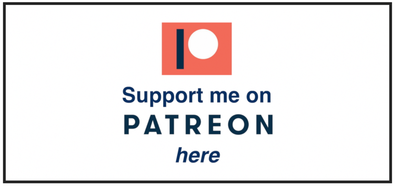
Did you enjoy reading this? Please click the subscribe button and also consider making a monthly pledge in support of my daily advocacy of basic income for all.
_large.jpg)
UBI Guide Newsletter
Join the newsletter to receive the latest updates in your inbox.
